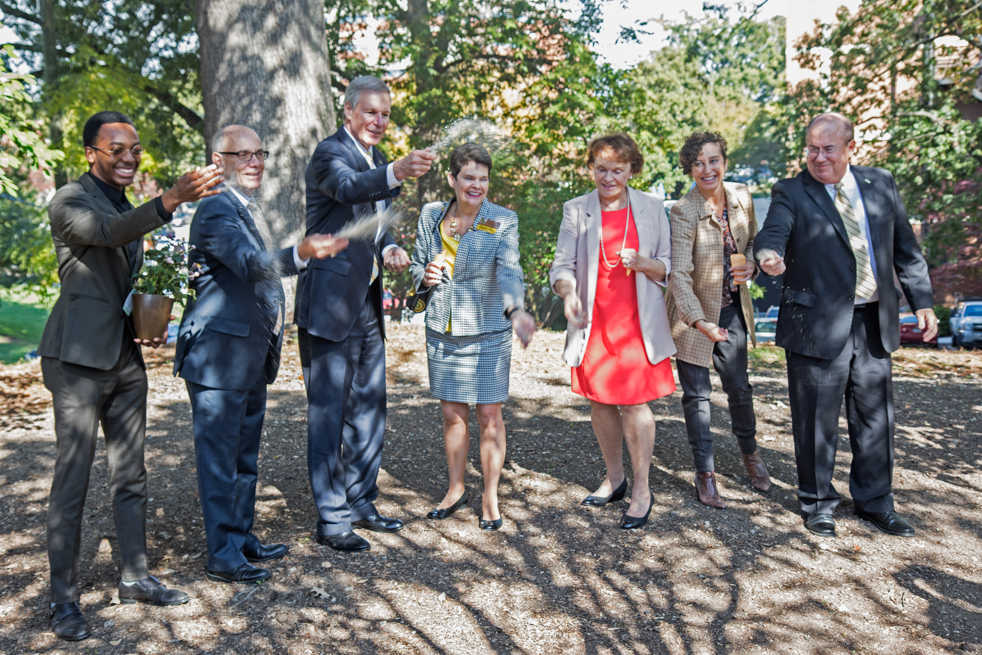Thursday, Nov. 2 saw the official launch of The Kendeda Building for Innovative Sustainable Design (KBISD), formerly known as the Living Building at
Georgia Tech.
In keeping with the spirit of what the building will be, instead of breaking ground, President G.P. “Bud” Peterson and a group of others associated with the launch planted seeds of black-eyed Susans and various other flowers and plants.
Additionally, all in attendance were given a packet of seeds and encouraged to spread them over the grassy area bordering the parking lot at the corner of Ferst Dr. and State St., where the KBISD will eventually be located.
“In lieu of traditional shovels and hard hats to celebrate beginning construction,” said Michael Bryan II, second-year ENVE and GT Office of Campus Sustainability Materials Management Intern, “we would like the entire community to take part in the launch of the living building, and so, we have packets of seeds that are going to be passed out and we will be planting them.”
President Peterson opened the ceremony, welcoming everyone to the event, which had been rescheduled to Nov. 2 due to Hurricane Irma.
“The weather is a little nicer today than it was on the date that we originally planned,” Peterson said. “I have to tell you, I’m a little overwhelmed with the response. I think it’s just one example of how important this type of project is to the people of the city of Atlanta, to the people here in the Southeast, and people across the country and, in fact, around the world.
The KBISD aims to be the first Living Building Challenge 3.1-certified facility of its size in the Southeast. The Living Building Challenge 1.0 was officially launched to the public in 2006. In its current state, the challenge has 20 imperatives ranging from limits to growth to inspiration and education.
From the Living Building Challenge 3.1 document, the difference between this new version and past are changes to ten of the imperatives. Among these changes are clarifications, inclusion of new resources and removal of certain requirements depending on the classification of the building.
Following President Peterson was Steve Swant, executive vice president for Administration and Finance.
“Georgia Tech is honored to partner with the Kendeda Fund to develop one of the most environmentally advanced buildings in this region,” he said. “This project supports our longstanding vision for the campus and provides a unique opportunity to physically demonstrate how Georgia Tech practices thoughtful stewardship of all of our resources and how innovative thinking can transform the way we think about and interact with the built environment.”
The Kendeda Fund is providing 100 percent of design and construction cost, amounting to $25 million. Additionally, they will provide $5 million to support activities and programming.
“As one of the world’s
preeminent engineering universities, Georgia Tech is the ideal partner to help The Kendeda Fund prove that regenerative design can and will work in the Southeast,” said Dena Kimball, executive director of The Kendeda Fund. “Together, we hope to transform how the region thinks, builds, lives, and learns. From day one, Tech has embraced the Living Building Challenge enthusiastically, and they are already using it as a springboard to examine other projects around campus.”
According to the timeline given by livingbuilding.gatech.edu, the construction on the building is scheduled to finish in Jan. 2019. However, certification for the Living Building Challenge 3.1 is not expected until the Summer of 2020.
